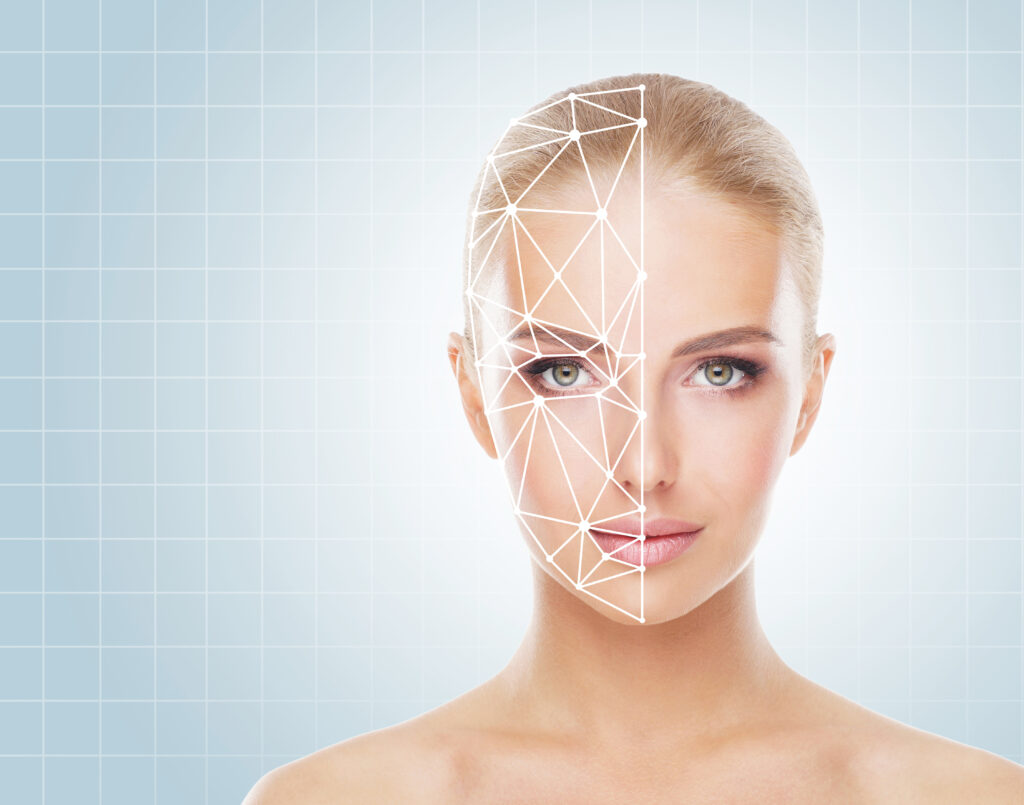
NATURALLY
DRIVEN
BY SCIENCE

THE SCIENCE BEHIND
We are delighted to present you more insights beyond our groundbreaking product Cocera Skincare. It is our pleasure to demonstrate the superiority of our inside-out approach using a unique and patented wheat ceramides complex with essential vitamins, minerals and trace-elements over the traditional topical approach to skincare.
Bioavailability and Absorption: Wheat ceramides in COCERA, when consumed orally, have a higher bioavailability compared to topical applications. The oral route ensures efficient absorption of the wheat ceramides into the bloodstream, allowing them to reach the deeper layers of the skin and provide their full benefits, while topical applications are limited by the skin’s natural barrier function.
Targeting the Root Cause: The inside-out approach of COCERA addresses the root causes of various skin issues by nourishing the skin from within. By providing essential nutrients such as wheat ceramides directly to the skin cells, COCERA promotes cellular regeneration, collagen production, and skin elasticity, leading to a healthier, more radiant complexion.
Enhanced Synergy with Other Nutrients: Oral consumption of wheat ceramides in COCERA allows them to work synergistically with other essential nutrients in the body, such as vitamins, minerals, and antioxidants. This not only enhances the overall effectiveness of the wheat ceramides but also contributes to a more holistic approach to skincare and overall health.
Long-lasting Effects: Unlike topical applications, which often require frequent reapplication to maintain their effects, COCERA’s inside-out approach provides more sustained benefits. By continually nourishing the skin from within, the effects of wheat ceramides are more long-lasting and consistent, resulting in improved skin health over time.
Protection Against Oxidative Stress: COCERA’s wheat ceramides offer potent antioxidant properties, which protect the skin from oxidative stress caused by environmental factors such as UV radiation, pollution, and other harmful agents. Topical applications may only provide limited protection, whereas the inside-out approach ensures comprehensive defense against these damaging factors.
Evidence from Scientific Research: Numerous studies have demonstrated the effectiveness of wheat ceramides when consumed orally for improving skin health. These studies provide solid scientific evidence that supports the superiority of the inside-out approach compared to topical applications.
In conclusion, the inside-out approach using wheat ceramides in COCERA offers a more efficient, beneficial, and scientifically supported alternative to the traditional topical approach to skincare. By addressing the root causes of skin issues, enhancing the synergy with other nutrients, providing long-lasting effects, and protecting against oxidative stress, COCERA revolutionizes the way we care for our skin and overall well-being. Thank you for your time and consideration, and I hope this presentation has convinced you of the merits of our innovative product.
Welcome to the COCERA SKIN LAB
“Your skin was made to keep things out of your body and to protect you from external influences”
Welcome to the COCERA SKIN LAB
“Your skin was made to keep things out of your body and to protect you from external influences”
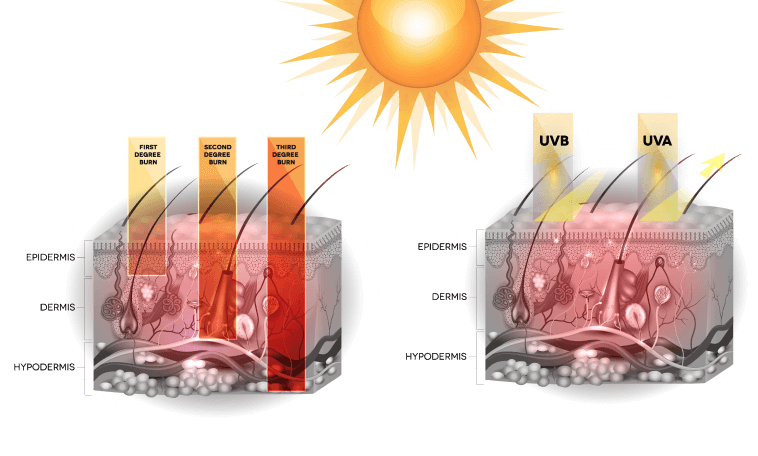
COCERA was made to provide you a natural alternative and If you are looking for the more natural nevertheless effective pathway to quickly regenerate and support your skin and to feel self-confidence and beautiful again and to visibly reduce fine lines and wrinkles we love to welcome you to try COCERA.
Give nature and COCERA a try before pushing your skin through repetitive actual operative procedures, accepting a short-term numbness of the skin for a few hours, or swallowing daily numerous capsules and tablets containing artificial colors, fillers, and chemical additives, or make the mixing of powders become your daily routine when there is a more comfortable natural holistic more effective natural way of treating your skin and yourself by inviting COCERA to become your best friend during your daily skin and beauty routine.
What is COCERA?
In the course of our lives, we expose our skin to a wide variety of environmental influences that damage the skin and accelerate its aging.
At a young age, our sensitive epidermis still contains sufficient levels of protective phytoceramides – but their content decreases steadily with age. The consequences are known: the skin becomes dry, loses its elasticity and becomes increasingly limp.
But what exactly happens?
The collagen and the phytoceramides are absorbed by the body via the intestine, through the bloodstream they then reach the deep skin layers. There, the natural ingredients not only increase the moisture, but also the structure and elasticity of the skin.
Anti-aging effect supported
by in-vitro data
preserve collagen network integrity

COCERA intergridients induce the production of an inhibitor of collagenase. Collagenase is an enzyme responsible for collagen network degradation.
preserve skin elasticity

COCERA intergridients are a poerandful inhibitor of elastase help protect cutaneous elastic fibers Elastase is an enzyme destroying elatic fibers.
reduce oxidative stress

COCERA integridients helps fight free radicals and helps inhibit oxidative reactions in the body. Oxidative stress is caused by free radicals coming from oxygen we breathe.
A rapid and perceived action
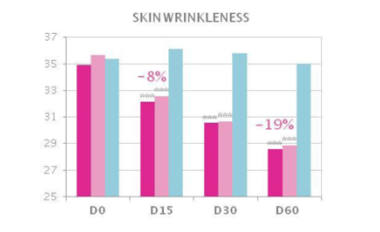
ANTI-AGEING EFFECT
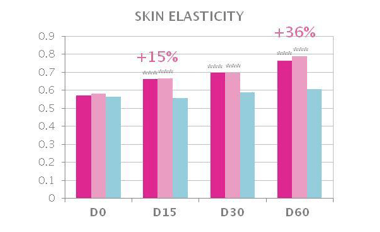
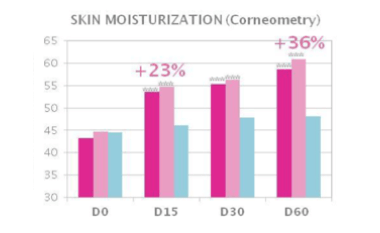
STRONG MOISTURIZING EFFECT
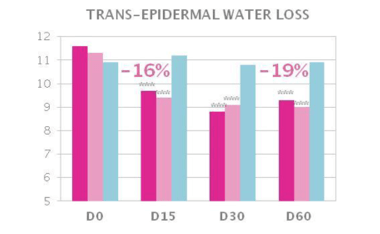
A rapid and perceived action
ANTI-AGEING EFFECT


STRONG MOISTURIZING EFFECT


The Science Behind COCERA’S Major ingredients
Get a deeper understanding of the ingridients in COCERA, and what it will do for your skin and your body.
As more and more information regarding skin aging solutions becomes available, consumer awareness continues to increase and is at an unprecedented high. Topical applications are no longer enough; Especially our customers are now viewing lifestyle as an important factor in the appearance of their skin.
Diet and optimal hydration are perceived to be more impactful on the
appearance of the skin than anti-aging skin care products. In a study by Mintel, 36% of consumers responded that they believe diet has a visible effect on the skin, with 44% believing the same for hydration, but only 26% responded this way for anti-aging products1. The beauty care market has expanded beyond topical applications, presenting the advantageous opportunity for beauty from within supplementation.
Effective supplementation requires bioavailability. The pathway of orally-ingested ceramides was shown using radio-labeled ceramides in rats3.
When phytoceramides are ingested, they are digested at the intestinal level into components that are absorbed into the bloodstream and delivered to the skin. Here, they participate in the synthesis of new ceramides, helping to lock in moisture by reinforcing the barrier function of the skin.
DGDG provides a synergistic effect, improving ceramides’ metabolism and absorption versus ceramides alone. This makes the specific complex of Ceramosides™ the optimum combination of compounds for quick and efficient action on the skin.
Moisturizing claims were present on 70% of new topical face and body care launches in the past five years. Almost 40% of these products make claims on the speed with which the consumer will perceive results, and 20% claim to reduce fine lines and wrinkles2. Thus, “moisture”, “quick efficacy”, and “anti-aging” are critical targets for skin care.
The primary function of the skin is to create a barrier between the inside and
outside of the body, providing protection from the outside environment while keeping inside functional necessities: specifically, water. Like all other organs, human skin undergoes chronological aging. Unlike other organs, the skin is in direct contact with the environment and therefore undergoes the most environmental stress while also being key to outward appearance.
The skin is constituted of three layers: hypodermis, dermis, and epidermis. The water barrier function is ensured by the outer part of epidermis, i.e. the most external layer of the skin, called the stratum corneum, which is composed of cells called corneocytes and lamellar lipids4.
This barrier is analogous to a brick wall, with the corneocytes acting as the bricks and the lipids as the mortar, the major lipids being:
ceramides, cholesterol, and free fatty acids (Figure 1). This barrier permits the retention of water within the corneocytes. As a result they swell up, preventing the formation of cracks.

Chronological aging results in decrease of ceramides, causing dry skin and, eventually, fine wrinkles and cracks. This phenomenon is also observed in the winter6.
The decrease in ceramide content is a key factor in the decline of the epidermal barrier function, and as such is central to the development of all dry skin conditions4.
COCERA contains a patented lipidic extract of wheat7, containing a natural synergistic complex of ceramides and Digalactosyl Diglycerides (DGDG). DGDG is a self-emulsifying compound naturally found in wheat, which boosts the activity of the ceramides and ensures efficacy, specifically by improving the ceramides’ metabolism and absorption. Ceramides alone would not have the same benefits as this combination.
This complex has been selected for its strong efficacy on skin hydration, allowing a rapid action with a low daily dose. COCERA provides the skin with the compounds needed to restore ceramides deficiency in the stratum corneum.
Gluten is a complex mixture of hundreds of related but distinct proteins, mainly gliadin and glutenin, which are naturally found in grains and cereals, including wheat. These proteins are the biological reserves of amino acids. When digested by humans, however, gluten has been implicated in several disorders. The Food and Drug Administration in the United States, EU regulation, and the Codex Alimenatrius Commision (International standard), all define gluten-free as “the allowable level of gluten detectable to 20 ppm.”
A specific extraction and purification process which allows for the total elimination of gluten and provides a 100% lipidic extract (i.e. no residual proteins). Each batch is tested internally, using the Ridaquick Gliadine kit with a limit detection of 2.5 ppm. As an additional layer of security, an independent and accredited laboratory provides an external control, using the lower than 3 ppm. ELISA method with a limit of detection of 3 ppm. All gluten quantifications showed results.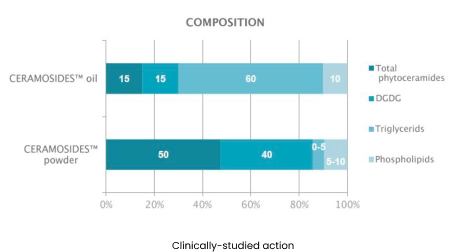
Ceramosides™ has been extensively studied to provide key beauty from within claims, including two human clinical studies, which have demonstrated significant and fast results.
In the Pilot study, 20 female volunteers between the ages of 30 and 50 years old in good general health, with dry skin and micro-wrinkles were selected to take one capsule containing 20 mg of Ceramosides™ per day.
Skin elasticity, moisturization index, and skin profilometry were measured before taking Ceramosides™, and again after 15, 30, and 60 days of supplementation. Over the course of 60 days, the subjects’ moisturization index increased by 40%, skin elasticity increased by 33%, and the skin roughness decreased significantly.
CERAMOSIDES™ was also tested in a placebo-controlled, randomized and double-blind study10. In this study, 60 healthy female volunteers with dry skin (Moisturization Index < 50) and BMI between 19 and 30 kg/m2, ages 30-60 were selected.
Subjects with lipid metabolism disorders, dermatological problems, and/or dermatological or pharmaceutical treatments were excluded from the panel. The study was performed during winter time to provide the most harsh conditions for skin lipids.
To eliminate variations caused by topical treatments, the subjects were all provided with the same topical cream to apply throughout the study with no application of other creams allowed. Over 60 days, subjects were randomly split into three groups and provided oral capsules of: 70 mg of Ceramosides™ Oil, 30 mg of Ceramosides™ Powder, or placebo, respectively. Volunteers were not allowed any other skin care treatment, changes in washing habits or diet, or extended sun exposure during the course of the study.
Scientifically and internationally recognized measurements were taken at the beginning of the study, and then again after 15, 30, and 60 days. Quantifiable data to measure skin moisture, elasticity, and wrinkles were taken by corneometry., Tewameter, and profilometry. All data were analyzed using conventional statistical analysis.
The measurements of skin moisture, Moisturization Index (MI), were taken by the CORNEOMETER®, which measures capacitance, or the ability to store electric charge. This is based on the fact that water, with a dielectric constant of 81, has a large difference from other substances in the skin, which are mostly below 7. Therefore, the capacitance is directly proportional to the water content in the skin.
As previously mentioned, subjects with a MI <50 were selected for this study. Normal moisturized skin typically has a MI between 50 and 60. Very moisturized skin has a MI of 60 or higher. Measurements of the face were taken at day 0, day 15, day 30, and day 60 (Figure 3).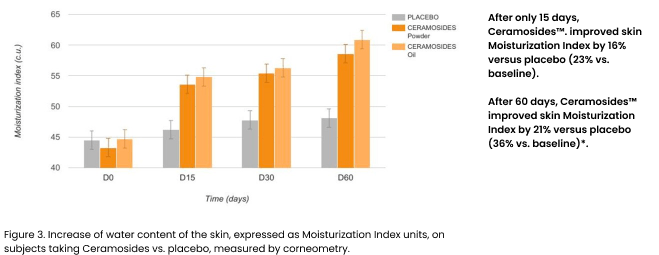
While corneometry measures the water content inside the skin, it is also important to measure the total amount of water vapor being lost through the skin, or transepidermal water loss (TEWL). The measurement of TEWL is typically used to characterize the water barrier function of the stratum corneum, specifically to evaluate the efficacy of treatments of dry skin. When there is damage or weakening of the barrier function of the skin, the water loss will increase.
The Tewameter® is the most scientifically-accepted device for the assessment of TEWL and thus for the study of the skin barrier function11.
It provides an accurate measurement of TEWL by an open chamber measurement which detects the water evaporating from the skin using a pair of sensors, providing a numerical value in grams per hour per square meter.
As volunteers for this study had typical dry skin, an improvement in skin barrier function should correlate with a reduction of TEWL. Measurements were taken with the Tewameter® at Day 0, Day 15, Day 30, and Day 60 (Figure 4).
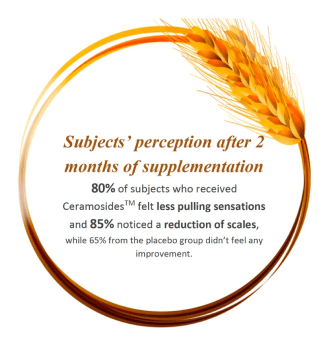
Collagen provides rigidity and strength to the skin. Reduction of collagen is a characteristic feature of chronologically aged skin. One of the facts is the increase of the collagen-degrading matrix metalloproteinase (MMP’s) with age. The body has natural defenses against MMP’s to prevent the degradation of collagen, referred to as tissue inhibitor of metalloproteinases (TIMP). With age, the balance between MMP’s and TIMP’s is skewed in the favor of MMP’s.
CERAMOSIDES™ has been shown in vitro to increase the secretion of TIMP-1, inhibiting the molecules responsible for the breakdown of collagen and thus preserving the collagen network12.
Fine lines, wrinkles, and loss of elasticity are the most obvious signs of aged skin.
Fine lines and wrinkles occur when the skin is less plump, whether from being dehydrated or from the depletion of structural proteins of the epidermis, or a combination of both. Improvement in skin wrinkledness on the face is key to making anti-aging claims.
Skin wrinkledness was evaluated by profilometery, using the Visioscan VC® camera. In this type of measurement, high-definition black-and-white images are taken under UV light.
The grayscale correlates to specific phenomena of the skin (e.g. white pixels represent desquamation of the skin; dark pixels represent lines and wrinkles). The software associated with the Viscioscan® evaluates the parameters pulled from the images in terms of scaliness, smoothness, roughness, and wrinkles, in units specific to this type of measurement.
The facial skin surface of subjects in this clinical study was measured with Visioscan at Day 0, Day 15, Day 30, and Day 60 (Figure 5).
With age, skin elasticity decreases, having a visible result and simultaneously promoting the formation of more wrinkles13. Improvement in skin elasticity results in an improvement in the global aspect of the skin, as well as prevention of future wrinkles.
Skin elasticity was evaluated using the scientifically-recognized method of cutometry. The Cutometer® provides a measurement of skin elasticity based on a probe which suctions the skin, measuring the length to which it was pulled, and then releases it, measuring the amount of time required to return to its original position.
Using these two measurements, the Cutometer® provides a numerical value associated to elasticity. Skin elasticity of the subjects in this clinical study was measured using cutometry at Day 0, Day 15, Day 30, and Day 60 (Figure 6).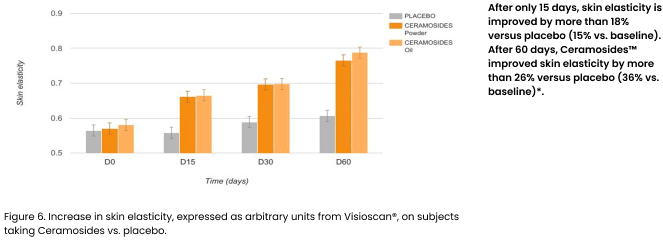
Ceramosides™ role in preserving skin elasticity Elastin is a protein that provides elasticity to the skin.
The enzyme elastase is responsible for breaking down elastin fibers. Ceramosides™ have been tested in vitro and ex vivo to decrease elastase activity, preserving skin elasticity14.
Subjects’ perception after 2 months of supplementation from the Ceramosides™ groups,
80% felt an improved skin appearance, while 65% from the placebo group didn’t feel any improvement.
Skin texture plays a significant role in the judgment of facial beauty. Surface homogeneity has been shown to be perceived to be more attractive than rougher skin15.
A comprehensive beauty from within ingredients will concern skin texture as well, in addition to moisture, wrinkles, and elasticity. Skin smoothness and roughness were tested using the same profilometry method as was used for wrinkles, the Visioscan VC® camera (Figure 7, 8). 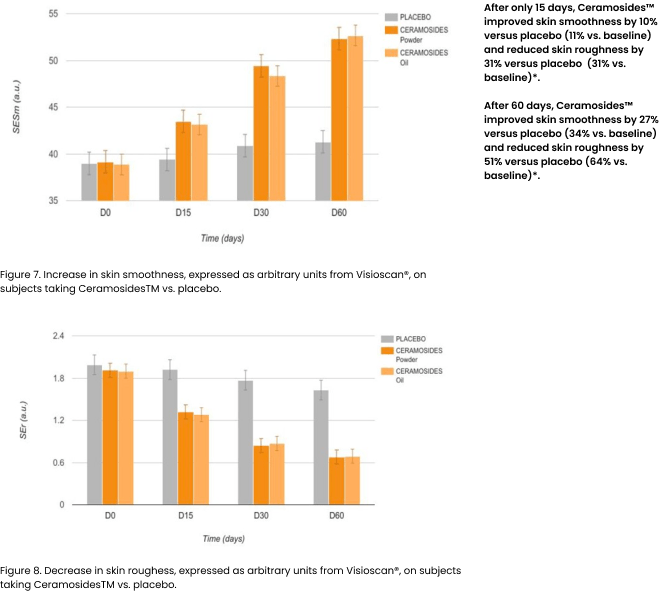
Subjects’ perception after 2 months of supplementation from the Ceramosides™ groups, 85% felt their skin smoother and softer, while 65% from the placebo group didn’t feel any improvement.
http://www.mintel.com/press-centre/beauty-and-personal-care/interest-in-natural-formulations-drives-struggling-us-facial-skincare-andanti-
aging-market (accessed: May 19 2017).
2. Mintel. (2017). Personal Care – Body Care, Face / Neck Care – U.S.- May 2017. Retrieved May 19, 2017 from Mintel Reports database.
3. Ueda O, Hasegawa M, Kitamura S. Distribution in Skin of Ceramide after Oral Administration to Rats. Drug Metabolism and
Pharmacokinetics. 2009;24(2):180-184.
4. Cork M. The importance of skin barrier function. Journal of Dermatological Treatment. 1997;8(sup1):S7-S13.
5. Beeckman D, Campbell J, Campbell K, Domansky R. Incontinence-associated dermatitis: moving prevention forward.
6. Rogers J, Harding C, Mayo A, Banks J, Rawlings A. Stratum corneum lipids: the effect of ageing and the seasons. Archives of
Dermatological Research. 1996;288(12):765-770.
7. Extrait Vegetal De Cereales A Base De Lipides Polaires Et Composition Cosmetique Comprenant Un Tel Extrait Vegetal. EPI France,
assignee. Patent FR2779646. 01 Sept. 2000.
8. Biesiekierski J. What is gluten?. Journal of Gastroenterology and Hepatology. 2017;32:78-81.
9. EPI, France. (2006) Clinical Evaluation of Skin Moisturization and Skin Micro-Relief Improvement of a Product by Oral Route. Farcoderm
SRL – Clinical Trial Report: unpublished.
10. Valérie Bizot, Enza Cestone, Angela Michelotti, Vincenzo Nobile. Improving Skin Hydration and Age-related Symptoms by Oral
Administration of Wheat Glucosylceramides and Digalactosyl Diglycerides: A Human Clinical Study. Cosmetics. 2017;4(37):1-17.
11. Barel A, Clarys P. Study of the stratum corneum barrier function by transepidermal water loss measurements: comparison between
two commercial instruments: Evaporimeter and Tewameter. Skin Pharmacology and Physiology. 1995;8(4):186-195.
12. EPI, France. (2006). Wheat Cerasomes Influence on the Secretion of Specific Inhibitor of Interstitial Collagenase: Timp-1. Internal EPI
Report: unpublished.
13. Fujimura T, Haketa K, Hotta M, Kitahara T. Loss of skin elasticity precedes to rapid increase of wrinkle levels. Journal of Dermatological
Science. 2007;47(3):233-239.
14. EPI, France. (2006). Ex Vivo Study: Anti-Elastase Effect of Wheat Cerasomes on Human Skin Section. Internal EPI Report: unpublished.
15. Fink B, Grammer K, Thornhill R. Human (Homo sapiens) facial attractiveness in relation to skin texture and color. Journal of
Comparative Psychology. 2001;115(1):92-99.
Aging is a process.
Rejuvenation as well.
YOUNG
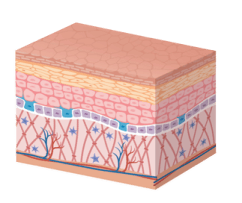
The ceramide-rich epidermis stretches like a sail over the collagen scaffold of the dermis, holds the skin cells together, acts as a barrier to the outside and keeps the moisture in the underlying collagen scaffold.
FROM 30 YEARS ON
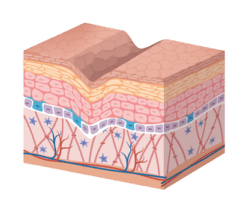
The ceramide content decreases, the cohesion of the keratinocytes becomes looser, the barrier function diminishes, moisture penetrates outwards, first wrinkles form.
The collagen fibers lose moisture, become thinner, the structural framework rapidly disappears, the dermis loses its elasticity.
FROM 50 YEARS ON

Ceramide content and barrier function continue to decrease, the loss of moisture increases, the wrinkles become deeper.
The collagen fibers dry out, become more fragile, the framework no longer has supporting power and the skin becomes increasingly flaccid.
A Carefully Developed, Holistically Instant Beauty Concept
The unique patented synergetic beauty complex inside COCERA makes it the new powerful liquid source of phytoceramides for your skin care with an exclusive unique anti-aging effect.
COCERA is a scientifically orthomolecular milestone in the field of natural effective nutricosmetics. COCERA does not require digestion. The body doesn’t need to extract the ingredients from fillers, chemical additives, coating, or binders before they can be absorbed because it’s already been done for you.
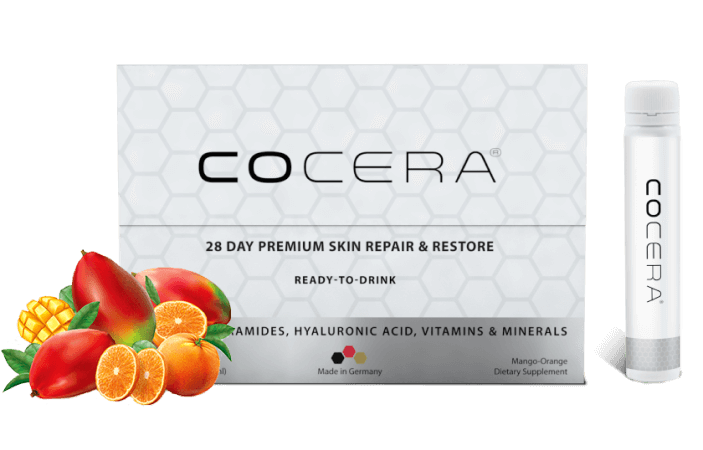
There is a real, tangible, added value as being the first full-body skincare concept in a ready-to-drink solution. Easy and Effective.
Please send us your photos, comments and tell us about your experience and thoughts with “THE SMARTEST SKINCARE” We are already super excited to receive your honest feedback.
Enjoy it and we would highly appreciate any feedback from you.


